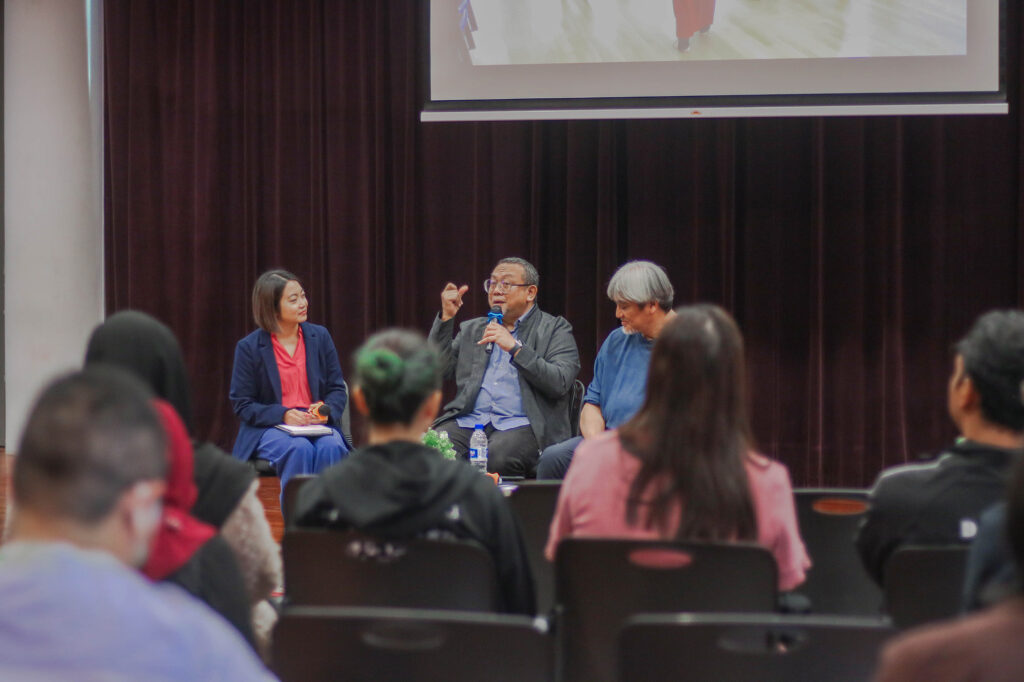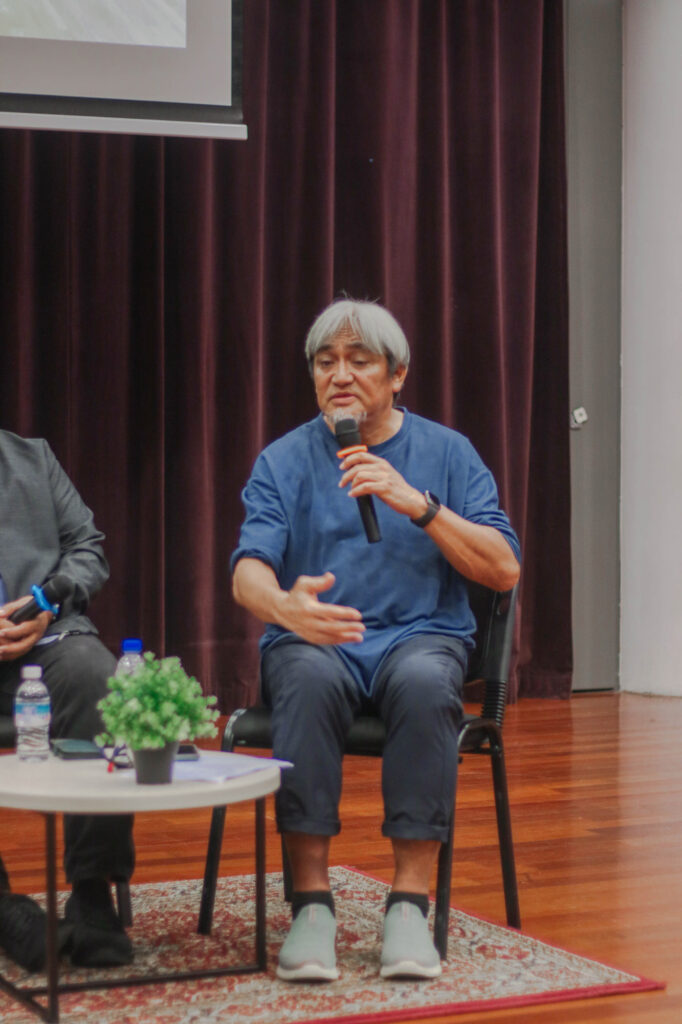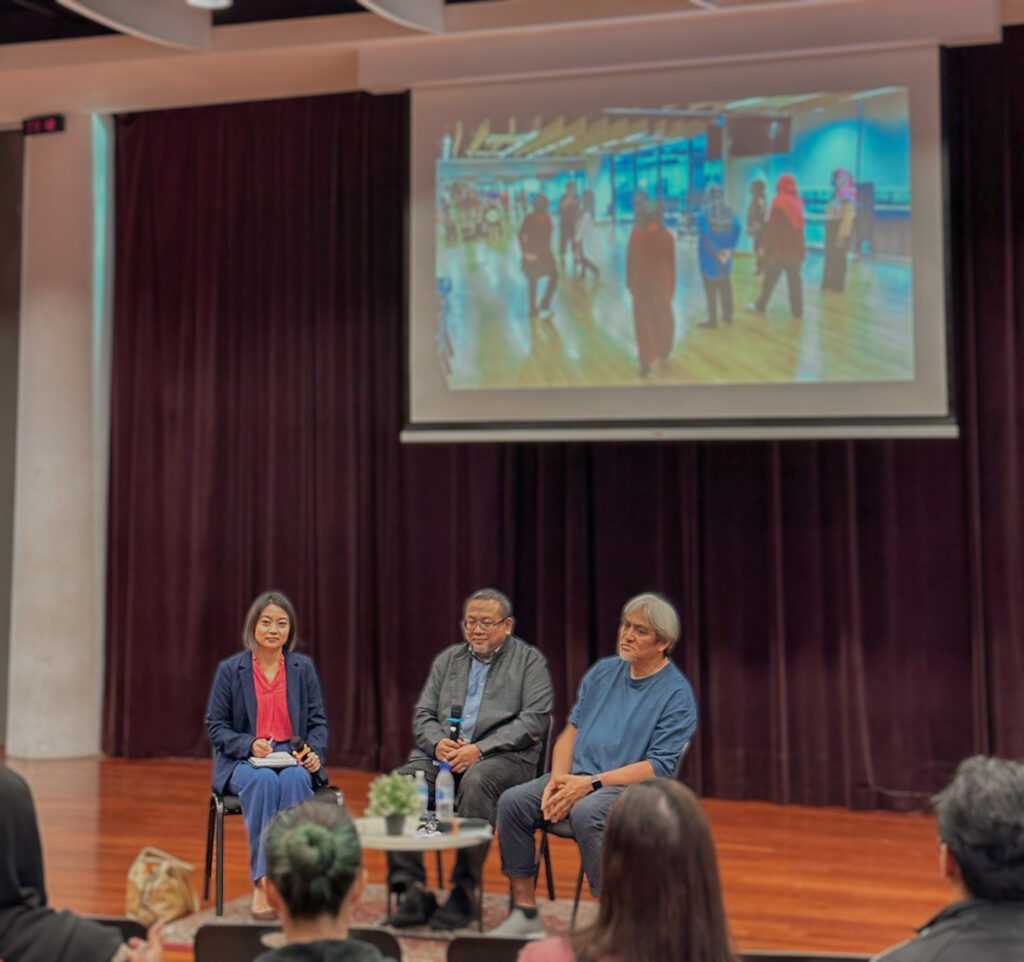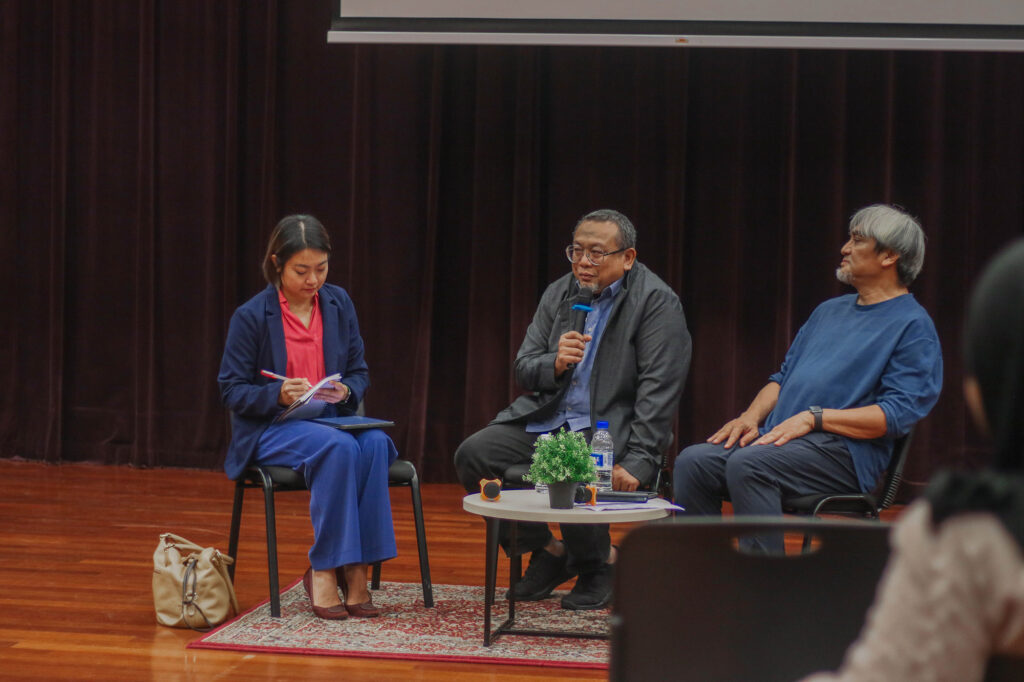Malay Dance – An Intervention
By Insyira Binti Rosly (2023)
Explore the possibilities of Malay dance and psychotherapy; through the strategies, insights and observations shared by the team behind the Wisma Geylang Serai Project.
The Wisma Geylang Serai (WGS) Project took place in 2022 and involved 20 women who partook in a Malay dance class led by Mr Osman Abdul Hamid and Mr Azmi Juhari. The women were aged 50-68 years old and were not familiar with Malay dance. These participants were initially interested in doing Zumba at WGS. They agreed to join these sessions when they were informed they would be learning Malay dance and attending group psychotherapy sessions with Mr Azrin Abdul Rahim, who holds a MSoc Sci in professional counselling. The project aimed to use dance as a platform for intervention for participants to deal with their personal issues while building a support network which can be continued even after the project ends. The group met for a 2-hour session once every week, and had 10 sessions in total.

During the sessions, Malay dance served not only as an icebreaker to ease the participants into the sessions and set the mood but also as a medium for Mr Azrin as the therapist to observe them. These observations would then be utilised during the therapy sessions. Mr Osman emphasised on the effort he took to cater to the needs and current abilities of participants by observing them before deciding on the best approach to engage them. He then decided to utilise their past memories, such as the Kampung life, as well as the elements of nature to introduce simple Malay dance steps. For example, he would ask them how they would smell or pluck flowers, and later continued to relate these movements to the dance steps.
“What is this feeling? If the floor is soft, how would you walk?”
This statement encourages them to relate dance to their memories, creating a sense of familiarity within them. Through this, Mr Osman was able to ease the participants into Malay dance and create an enjoyable environment for them, establishing a point where he could meet them where they were at as non-dancers. Malay dance, in particular, enables the participants to recall and utilise their past experiences growing up as a Malay individual. This could contribute to breaking the ice as it creates a sense of familiarity since the participants are relating to what was already close to their hearts.

Based on my experience as a student under Mr Osman, hinging on memories facilitates the construction of dance movements, making the movements and their execution more personal as we fill them with our own meanings and interpretation. Through this, dance provides an outlet for me to process my thoughts and feelings which could initially be difficult for me to confront. Similarly, these processes may also benefit the participants the same way as they may not have an outlet to process their own thoughts.
Notions of spatial awareness, understanding the music (by counting and matching the beats) and expressing oneself were also introduced during these dance classes as participants move around the room to the music and come up with their dance poses. These aim to enable participants to take charge of their movements, creating a feeling of empowerment. Some of the activities even require them to work in groups or pairs, fostering a sense of responsibility for one another and helping forge relationships.

The inclusion of dance in the project, therefore, acts as both an icebreaker activity and a therapeutic intervention. This pushes them to make decisions on their own while giving them a space to build connections with others alike.
“The idea that I can be helped by this person”
Following the dance classes was a counselling session with Mr Azrin. He, similar to Mr Osman, emphasised the importance of building relationships, specifically trust between the participants and himself. While the first few sessions were awkward, the participants soon began to open up once they became acclimatised to the environment and professionals. He noted that dance contributed significantly to this easing of tensions, especially since Mr Osman crafted a comfortable environment through his jokes and amiable personality. Through this, participants began to recognise the sessions as a safe space of trust.

Mr Azrin then explained why a working relationship between the professionals in this project was important. Mr Osman’s and Mr Azmi’s expertise was imperative to Mr Azrin to observe participants and identify the significant markers in their personal issues and lives through the way they danced. Mr Azrin shared as an example that he observed someone’s difficulties in fully committing to their dance movements, and the difficulties actually gave hints of certain personal issues or traumas that should be paid attention to. These were important information that could be brought up and broken down during the counselling sessions. Dance granted professionals such as Mr Azrin a medium to understand people better, particularly with the help of a trained eye, in this case, Mr Osman and Mr Azmi. The team working hand in hand provided the participants with more personalised and structured interventions, meeting their needs more adequately.
Malay dance, as reflected in this project, is more than its aesthetic value. It allows even those unfamiliar with it to tap into it as a means of empowerment and therapy. Incorporating dance into the lives of these women provided them with a safe space. Combined with the therapy, it enabled them to confront issues they may otherwise have neglected. I believe projects such as these serve as an opportunity for dance to be viewed as a tool of empowerment for others in society. It is a fun, light-hearted way to approach issues which may otherwise be too difficult to fathom.
